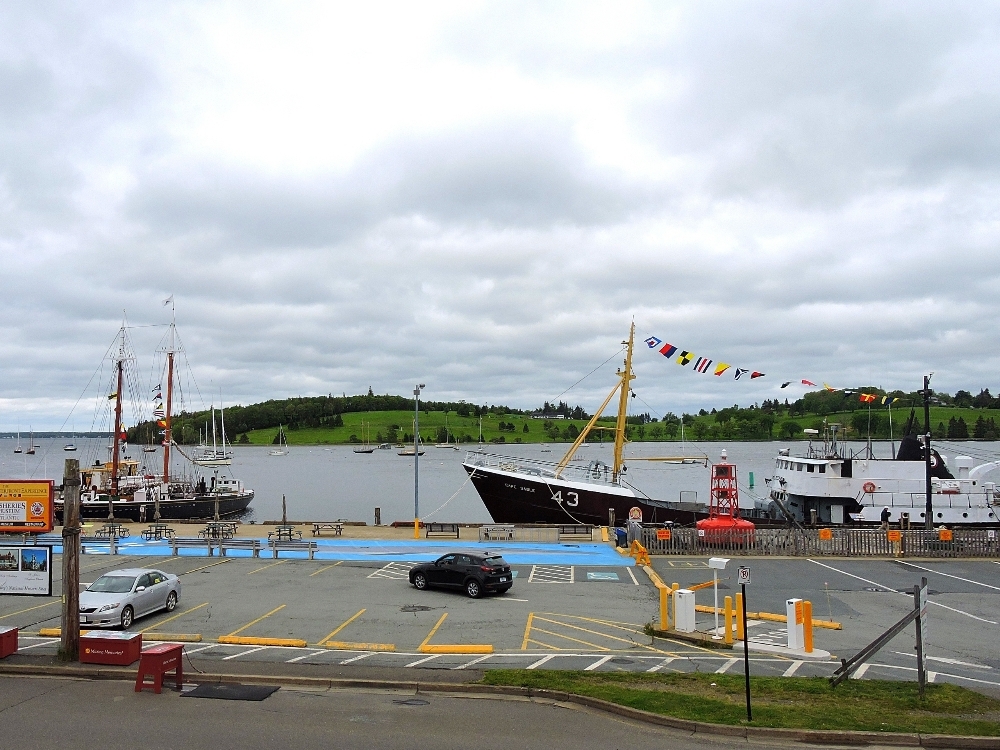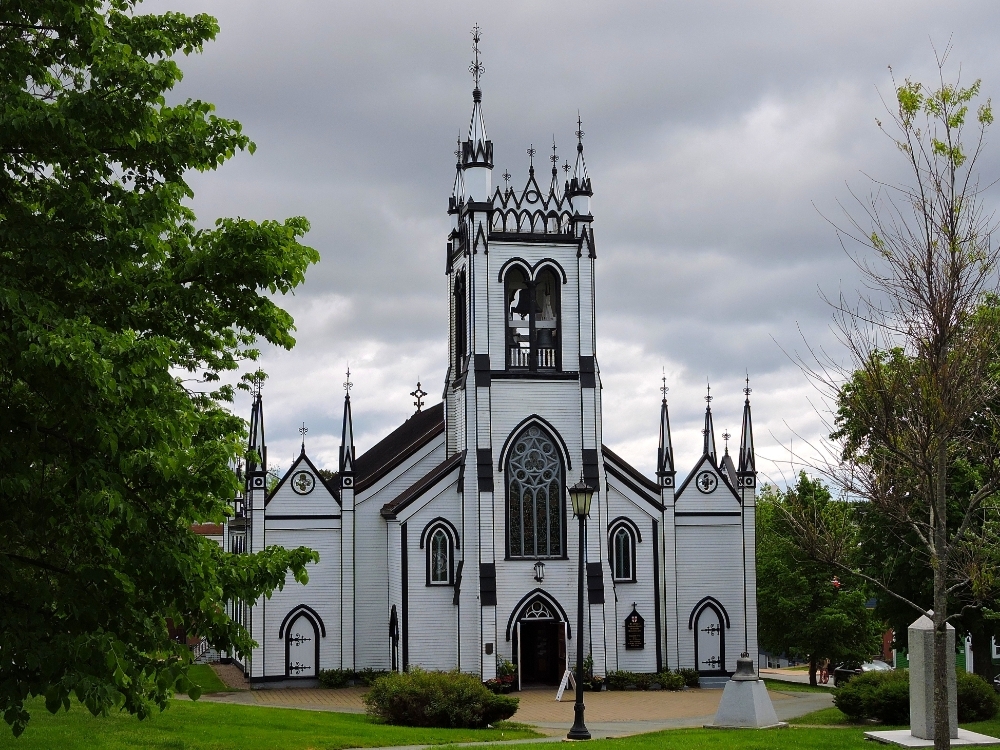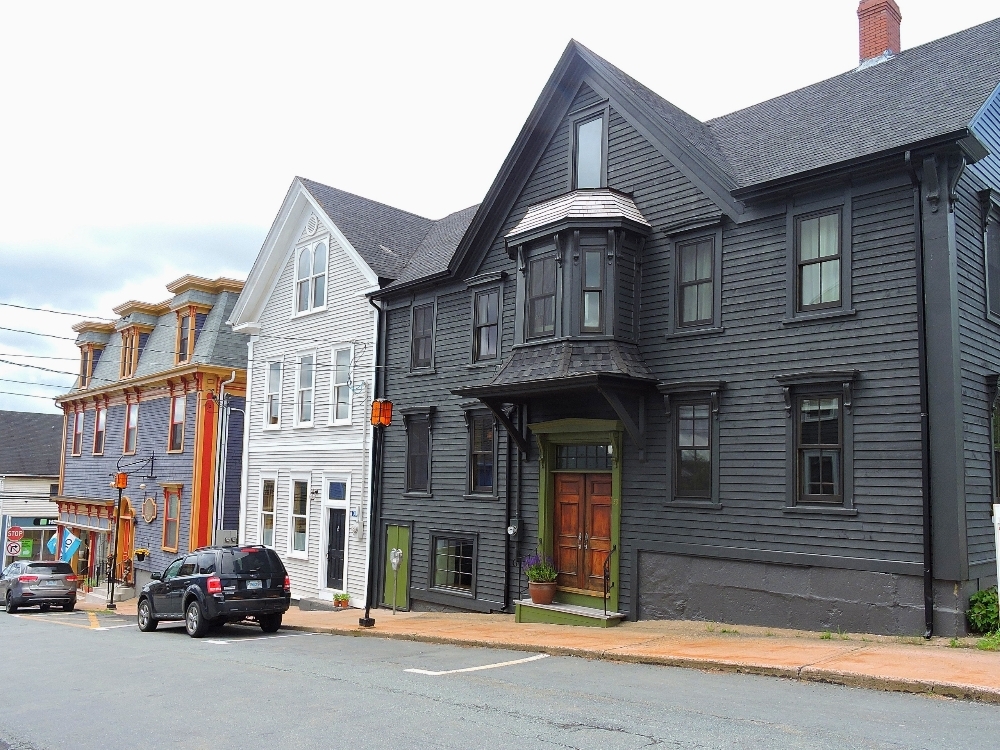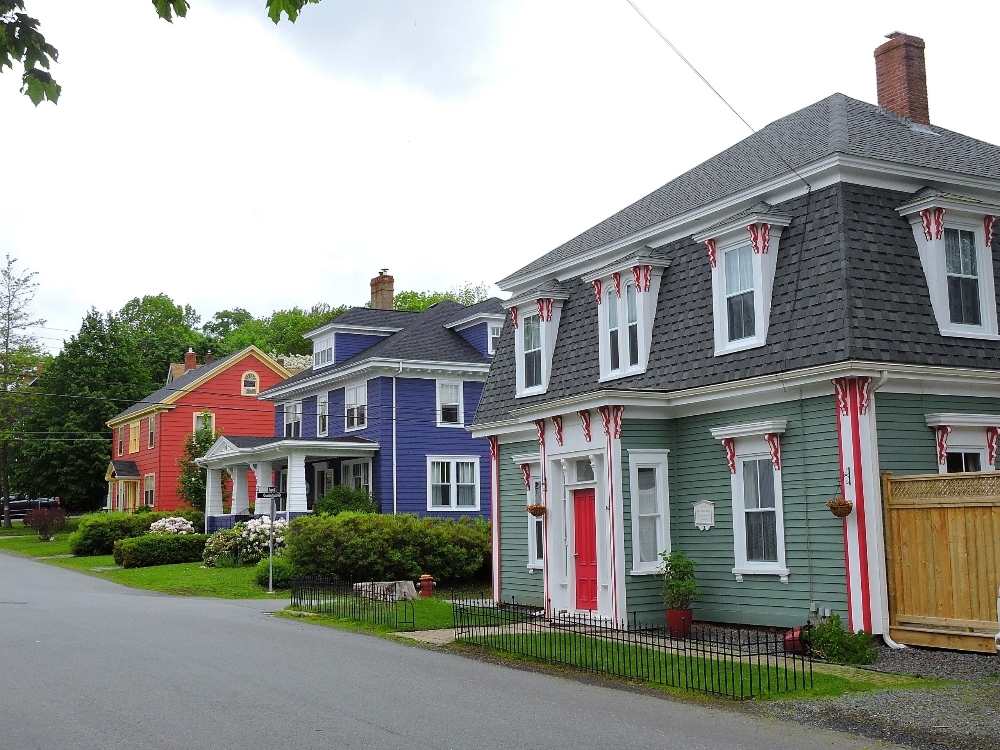While nearing the end of this section of the Tour, I also completed my planned visits to the nine Canadian World Heritage Sites that were convenient to my route. The final two that I saw were of the type that many WHS travelers consider to be enjoyable places to visit, though not generally the most amazing places on the List.
The first was The Landscape of Grand Pré, a site that commemorates both the industriousness and the tragic end of the early Acadian settlements located around the Bay of Fundy. Grand Pré was an Acadian village in the eastern Annapolis Valley, which existed for 75 years, from 1680 to 1755. Like many Acadian settlements, Grand Pré was noted for the considerable area of farmland that had been created by dyking and draining the salt mashes that once surrounded the townsite. The settlement also survived, and thrived, through the early eighteenth century, despite being periodically affected by the violent Colonial conflicts of that era. However, it could not withstand the events of the Acadian expulsion, when the British Colonial authorities chose to forcibly remove the Acadian communities, destroying their former villages in the process.
Given that backdrop, today there is not really anything specific left from the Acadian period that visitors can see. The converted marshes are still there, and are still being used for agriculture, but nothing remains from the original village site. There is a beautiful memorial garden, which was created in modern times, that was quite enjoyable to stroll through. I also learned several things about the Acadians, which I didn’t know before, from the interesting exhibits in the Visitor Center. If this site were only the dyked fields, which have counterparts in other parts of the World, or only the location of a vanquished village, it would probably not merit inclusion on the List. However, with both of these aspects taken together, the site is a more worthwhile place to visit.
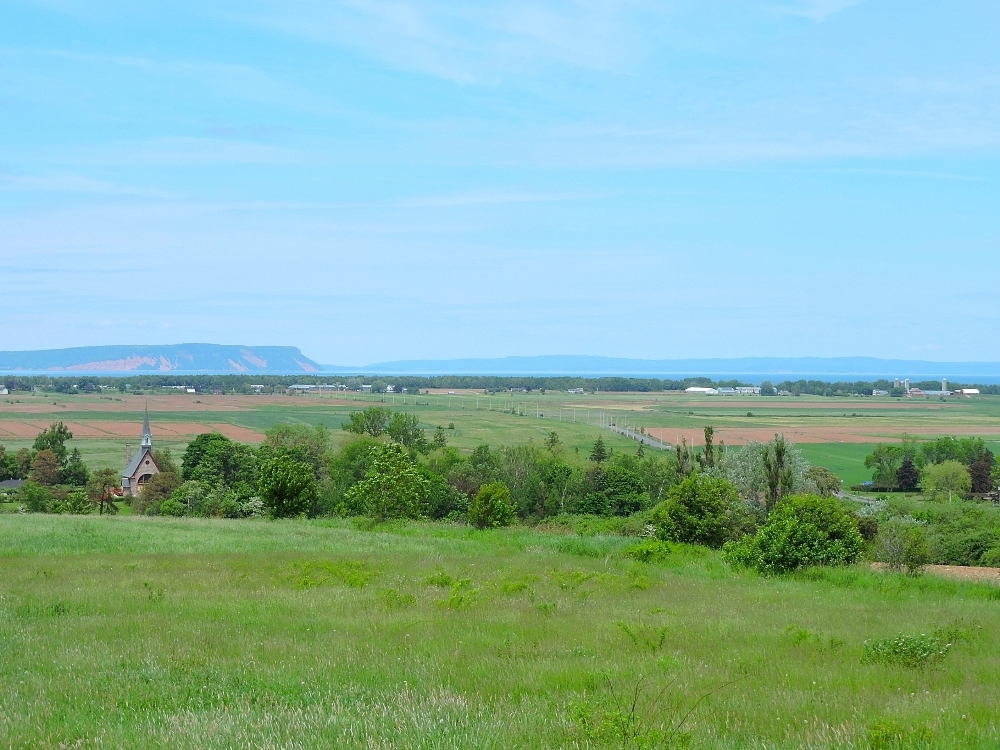
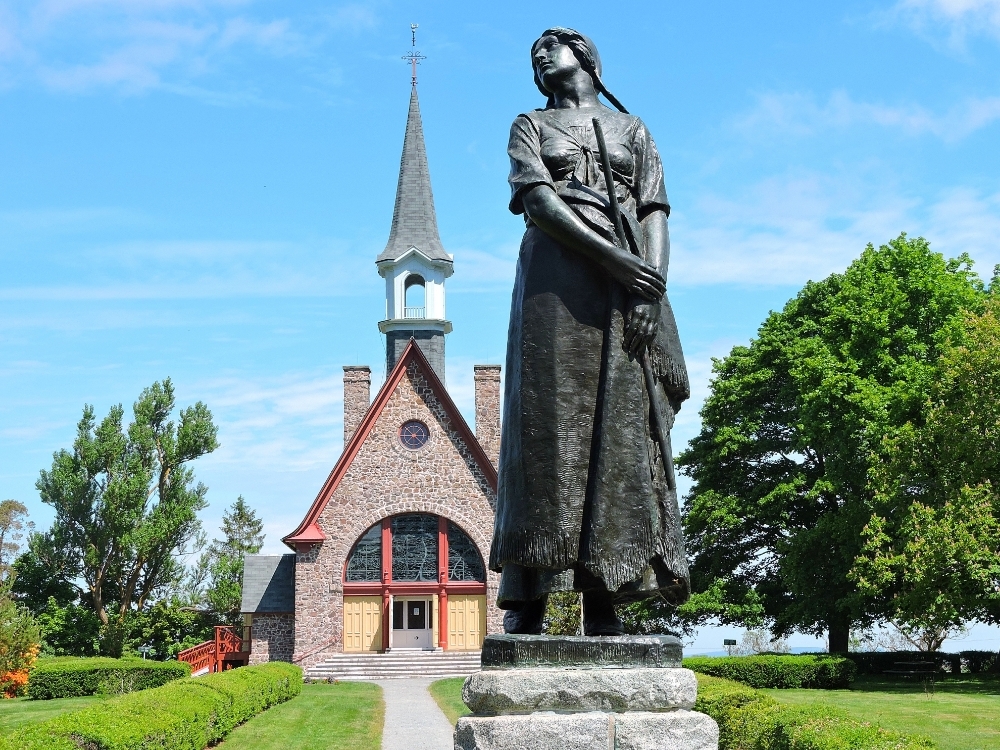
The final site I saw in Canada, Old Town Lunenburg, I reached after a rain-soaked ride from the north shore to the south shore of the Nova Scotia peninsula and, because of that, this was the first time I visited two WHSs on consecutive days. However, because of the unpleasantness of that particular ride, I saved my explorations of the town until the following day. Lunenburg was included on the List for being an exceptional example of a British colonial town in North America from the late eighteenth century. In that period, the British used a standardized rectangular grid pattern when building new towns in their colonies, and Lunenburg is a case where that original town plan has remained unmodified during subsequent years.
I am not sure that the Town Plan used by the British was particularly unique, but the town certainly does possess an exceptional collection of buildings that exemplify the beautiful artistry frequently used in the architecture of that period. Most of these have been especially well cared for, and many have been painted using vibrant and attractive palettes, though I suspect that some of these are not exactly period-specific, as they are supposed to be. I used my one-day stay in Lunenburg for both sightseeing and relaxation, and this town was well-suited for both of those tasks.
